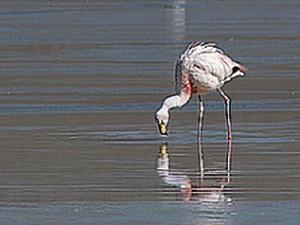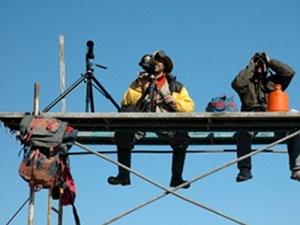Enrique Javier Derlindati
Other projects
This project aims to:
(1) analyse microhabitat characteristic associated to behaviour and distribution of two flamingos species,
(2) understand habitat use in two wetlands used in different moments of their life cycle.

Walking and feeding.
Flamingos (Phoenicopteridae) are gregarious, long-lived birds that inhabit saline water environments and breed in colonies. They can travel long distances between nesting and feeding sites, even during incubation and chick-raising, making regional approach a key for their study and conservation. Of the world’s six flamingo species, the rarest and least known are the Puna Flamingo (Phoenicoparrus jamesi) and the Andean Flamingo (P. andinus) and are considered “Vulnerable” and “Near Threatened” by IUCN Species Survival Commission. Their distribution are restricted to saline lakes at high plateau of central Andes and few lowland wetlands. These sites are highly variable and heterogeneous. Two extreme examples of this heterogeneity are Vilama (4500 m a.s.l.– summer range) and Melincué (84 m a.s.l. – winter range), which are considered priority sites for flamingos, supporting thousands of birds periodically. These wetlands and their species are threatened by human activities like mining, unregulated tourism, overgrazing, agricultural activities, and water diversion. Previous studies have focused on their spatial distribution and population sizes. Flamingo presence is associated to food availability and water quality. Their habitats are threatened by mining and water pumping.

Observation tower building in Melincué to survey flamingos activities.© M. Romano.
The major activities of our project are to make 3 summer and 3 winter flamingo surveys during one year to map microhabitats in lakes and record flamingo abundances and behaviour. We will make a photograph record to describe behaviour and make an image data base. We will record microhabitats variables [diversity and abundance of plankton, pH, O2 (mg/l) and conductivity (Sm)]. We will analyse behaviour data, comparing species’ abundances and mean activity among microhabitats. We will associate flamingo abundances with microhabitat’s variables.
This study is focus to understand the behaviour and ecology of Andean and Puna flamingos, which would allow us to develop actions for their conservation that considers a large spatial and temporal scales at which these species operate, including their seasonal movements.